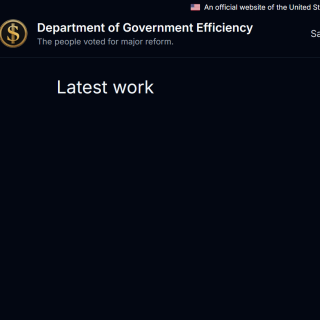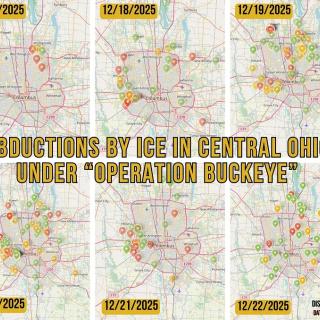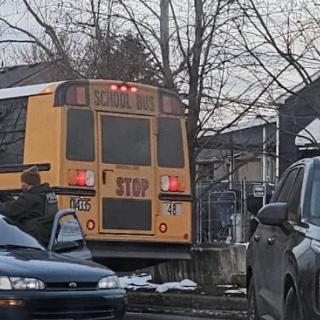Advertisement
I-71 really doesn't seem like a green line. Even with the new sound barriers, it's as pastoral a tank-moving thoroughfare as there could be in a major metropolitan city. I certainly don't ever remember going through any checkpoints as a kid, though I do remember never being able to play with my friends because they lived on the “other” side.
The particular nature of Columbus's segregation is something that I had always intuited but never consciously realized, until I saw the census map released by a research center from the University of Virginia a couple of weeks ago. The map shows a few things, such as how much more densely populated the “W” side of the Mississippi is as opposed to the “K” side, but its main goal is to graphically illustrate the nature of American segregation, blue dots for white people, red dots for Asians, orange dots for Hispanic, gray dots for “other” and green dots for black.
(see the map at: http://demographics.coopercenter.org/DotMap/index.html)
Spoiler alert: America is still segregated, but still, some cities are more separate but equal than others; Columbus is one of those cities. Of all the Midwestern cities, only Detroit has a more pronounced blue/green divide across a single street, and in Detroit, the fleeing white people at least had the decency to form their own town of Warren. Instead, Columbus's segregation resembles the Pendants of Life from Legends of the Hidden Temple, a whole riven in two, but in this case, unable to be joined together. And guess which half keeps getting taken by the Temple Guards?
Now, the use of interstate freeways as instruments of racial oppression is a story told all across this great land of ours, with many a black neighborhood being straight bulldozed through, and in this regard Columbus is no exception. Mayor Michael Coleman described I-71 as the Berlin Wall for the King-Lincoln district, cutting off the once thriving area from the rest of the city.
One of the ancillary goals of the all the construction projects on the freeways is to reconnect neighborhoods. The proposed Long Street and Spring Street bridge renovations appear to at least aesthetically reduce the chasm effect, but the effect of I-71 on our collective psyche extends past one neighborhood. Columbus's segregation is unique because most of the city built up after the dividing freeways were built. Just like on the map, the divide extends all the way from 270 to 270. With the exception of Weinland Park, and for some reason Broadmeadows, almost all the green dots are east of the freeway.
In the 21st century, the function of that segregation is not to keep the races separate for fear of a race war or of wild-eyed crazed mandingo rapists, but to keep the money separate. Though I-71 is the dividing line, the east side is still a veritable Oakland, CA of diverse neighborhoods. It's the west side that trends more monochromatic, and it's the west side where most of the money and power in this city is.
To truly heal, a radical re-visioning of the city is necessary. The capping of I-670 on High Street worked wonders for reconnecting the Short North and making Gallery Hop Columbus's favorite intergenerational hangout spot. Why not take a similar approach with I-71? Hell, why not cap the whole damn thing? Imagine a city truly unified, one where biking all the way across North Broadway doesn't require taking one's life in one's hands, a city where Cleveland Avenue is just as much of a cultural destination as High Street, where Clintonville parents can't provide a false sense of security to their kids by telling them that all the bad people are “over there”, a city in which there is no “over there”, a city that is only Columbus.
I take a lot of pride for having grown up in the heart of the heartland of America. Real change comes from the inside out, not from “progressive” coastal cities lecturing us on how to live. In other words, if it can happen here it can happen anywhere. Almost all of our nation's problems with racism (the wealth gap, the school system, profiling, et al) boil down to residential segregation. I-71 is part and parcel of that segregation. Highway deconstruction has started to become in vogue in some cities, but it has never taken on an explicit goal of racial justice. Since it's obvious that all transportation funds for Columbus will only go toward road projects, why not think radically about what those road projects could be. If Mayor Coleman really wants to reconnect neighborhoods, shifting highways a few blocks is not going to cut it. Instead, I say Mr. Coleman, tear down this sound wall!
Reach Peter: petermgunn@gmail.com



